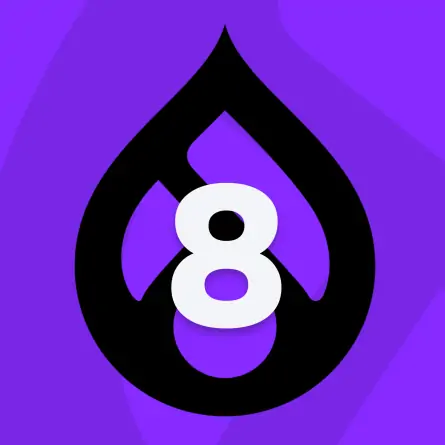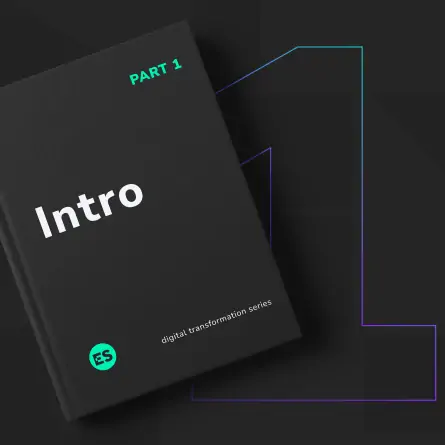Drupal 7 End of Life Is January 5, 2025 — It’s Time to Upgrade!
The deadline for Drupal 7 end of life was bumped into 2025, but make no mistake: It won’t be extended again. You’ll need to upgrade now or change your CMS.
Should You Switch From Drupal to WordPress or Another CMS?
Before going any further, now’s the time to evaluate alternatives and determine which solution will best fit the needs of your team and your organization as you move into the future. While some of our clients opt for closed-source, proprietary content management systems, the choice for most comes down to Drupal vs. WordPress.
If you’ve decided to stick with Drupal (and there are many good reasons to do so), you’ll want to upgrade to Drupal 11 as soon as possible to avoid potential vulnerabilities and take advantage of the newest improvements and functionalities. And you can expect the upgrade process to be a similar amount of work to moving to a new CMS altogether.
If you’re uncertain about this decision, we’re happy to help you evaluate the options in further detail.
The Main Benefits of Drupal 10 — the Precursor That Laid the Foundation for Drupal 11
D10 is built in D9 — essentially, it is just the latest version with minor but meaningful upgrades that include the following:
Integrated configuration management
Controlling data and component display is simpler than ever, especially for non-technical team members, as no coding is required.
Out-of-the-box media management
Although Drupal has a long history of supporting the management of images and generic files, it now offers a generic “media” field for uploading local audio, video, and images, as well as external media from sources like YouTube and Vimeo. A library allows you to easily manage your media archives.
Fully multilingual capabilities
Automated language translation allows you to reach different audiences with localized content. You can target specific geographic locations or audiences with detection of a preferred language based on a user’s IP address, browser settings, URL, or session, and content can be created, updated, and delivered to any audience in 100 different languages.
Accessibility for all
With everything from better text contrast to aural alerts and required image ALT text, D10 lets you create a variety of dynamic content interactions that are more usable for all.
Mobile-first design
Enhancements allow content managers to make changes more easily from mobile devices, and end users to more easily consume content on the mobile platform of their choice.
Speed
D10 features the fastest page loads to date thanks to new caching features.
New Administrative Theme
To make the content management experience smoother and more up-to-date, a new administrative theme, “Claro”, ships with Drupal 10
Updated WYSIWYG Editor
CKEditor 5, a more robust and user friendly text editor, ships with Drupal 10.
As a Developer, What Do I Gain?
Drupal has obviously established itself as an enterprise-class CMS, but under the hood, the architecture and coding practices have been more suited to PHP tinkerers than true software engineers. Looking back to Drupal 7, it was a lot of Spaghetti PHP, mostly procedural code, and config-in-the-database meant that Drupal just didn’t feel like the kind of system you expected to work on as a developer at that time.
But D10 — as an extension of the Drupal 8 rewrite — represents a fundamental rethinking of D7’s architecture, and the shift toward object orientation, Twig 2-based templates, config-in-files, and a host of other changes make it something that can attract and maintain the attention of more seasoned developers. Combine it with PHP 7.4.5, and you’ve got an architecture and development framework that feels much more contemporary.
As a System Administrator, What Do I Gain?
The most obvious answer to what Drupal 10 offers the system admins/IT folks is future-proofing. Drupal 7 and other outdated versions will eventually go the way of D6, left like an Apollo service module to float into space — appreciated, but no longer needed (or supported). You’re going to have to upgrade at some point, and planning for that upgrade can’t happen soon enough.
D10 also offers you the ability to implement a more well-governed devops workflow: the move from config-in-the-database to config-in-files makes versioning, staging, and feature updates much more practical. That said, your developers will still need to make use of those features for them to be valuable to you. They just have to ensure that they’re using the config exporter and the Features module — and they’re being smart about compartmentalizing their code. Otherwise, it involves the same D7-style devops workflow: “Keep a text document that lists the steps, and repeat the changes in both databases on deployment.”
As a Content Manager, What Do I Gain?
As a content manager, Drupal 10 probably won’t feel like a drastically different world, although the user experience will feel smoother and more up-to-date. It uses almost all of the same terms you’re used to: content types, nodes, taxonomy, views, etc., which means you won’t have to retrain yourself on how to manage content. It uses an updated CKEditor for editing body copy, a new administration theme, and sets the stage for visual content editing with modules like Layout Builder and Layout Paragraphs.
As a content manager, one of the most important things for you to know about upgrading is this: Drupal is really a collection of modules, and your site’s administrative back end is the product of how all of those modules are configured to interact with one another.
With a new administrative theme, updated text editor, and tools like Layout Builder, Drupal 10 sets the stage for a more modern, visual content editing experience.
What About the End User?
Because Drupal is so flexible, the end user’s experience will depend heavily on how well crafted and intuitive the front end of your website is. That said, Drupal 8 and Drupal 9 brought a host of performance improvements that are carried over into Drupal 10, especially when teamed up with PHP 7.3 or higher (the latest versions of Drupal’s underlying programming language). So you can expect a lot less sluggishness when serving pages. Additionally, Drupal 10 plays very well with a lot of the modern front-end frameworks (e.g., AngularJS, React), so your developers have a lot of freedom in how they craft the design and user experience.
What’s New in Drupal 11?
In addition to several core modules and themes that were deprecated and removed in the jump from D10 to D11, there are a host of additional changes you’ll see in this version. Here are a few of the most meaningful. You can get full details on the Drupal website.
New Capabilities With Recipes
The new Recipes API allows your dev team to immediately add capabilities to your site by applying pre-set configurations (e.g., content types, user roles, and more), as well as functionality that is based on your site’s specific needs (e.g., blogs, news, e-commerce, and more). Your devs can create, reuse, and share their own recipes — or leverage those that have been created by others.
Recipes are an integral part of Drupal Starshot, an initiative that aims to make the CMS easier for all users out of the box.
Robust Content Staging
By creating a parallel copy of your live site, the Workspaces module lets you edit, stage, and test changes and then deploy them to production seamlessly when ready.
Simplified Front-End Development
Single-Directory Components combine all necessary HTML, CSS, and JavaScript for each component in a single directory, making it easier to find, customize, and use — and providing a simplified front-end dev workflow.
How Hard Will the Upgrade From 7 to 11 Be?
Making the jump from 7 to 11 is fraught with potential issues — a lot has changed, and the upgrade paths aren’t always clear — but the effort will be well worth it in the end. If your site involves only a small set of very common modules, the process will be simpler, but you should still plan for some complexity. Also, the theme engine has changed drastically, so you’ll have some work to do if you want to convert custom templates to Twig 2 (assuming you’re not using an out-of-the-box theme). Plan early for your upgrade and don’t underestimate the effort.
If your existing site is ready for an upgrade or you’re planning to begin a new Drupal project, reach out to begin a discussion with our team as early in the process as possible. We’ll explain how the changes presented here apply to your unique situation and create a strategy for reaching your goals most effectively.
Get Expert Help With Your Drupal Upgrade
For a free estimate to upgrade or migrate your site, contact us today.



